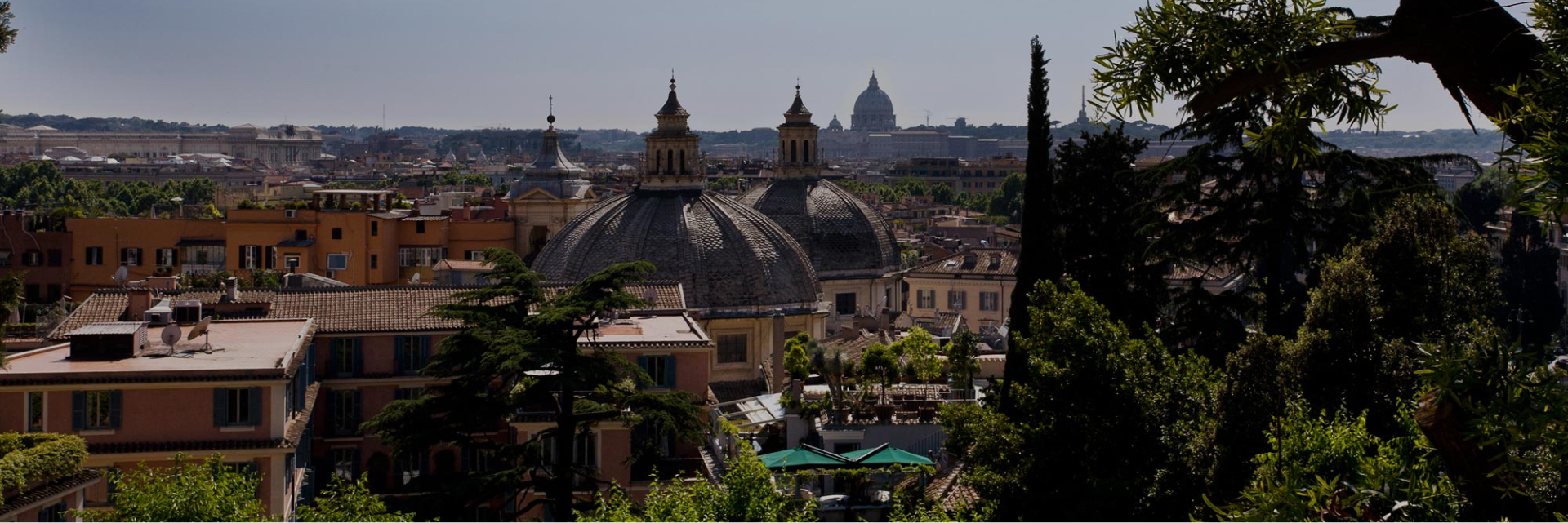Archaeological Site:
The Villa Borghese Park
Domus Daini is located between the Pinciano district and the Parioli neighborhood and is part of an elegant and refined living environment, a stone’s throw from Villa Borghese and its Parco dei Daini.

The monuments of Villa Borghese
Since the 17th century, Villa Borghese has been one of the largest archaeological sites in Rome, with an area of about 80 hectares and 8 entrances. It owes its name to the first residence of Cardinal Scipione Borghese. Built in the 600s and transformed into a museum in 1900, it has housed masterpieces by the likes of Raffaello, Tiziano, Canova, Bernini and Caravaggio.
Among its vast gardens and terraces, Villa Borghese contains numerous historic buildings, including the Meridiana and its secret gardens, the Casino del Graziano, the Casino Giustiniani and the Uccelliera.
The neoclassical buildings it houses, like the Casino dell’Orologio, the Fortezzuola or the Garden of the lake, on whose artificial island stands the Greek temple of Aesculapius, offer suggestive views. The temple can also be reached
with short boat trips.

Parco dei Daini:
The park of perspectives.
Parco dei Daini, from which the adjacent Domus Daini takes its name, also called “park of perspectives”, was a green area reserved to the prince. Its avenues are bordered by the colossal Herms of Pietro and Gian Lorenzo Bernini. Its name is due to the presence of deers and gazelles right in these areas until the end of the 19th century.

The history of
Villa Borghese.
The Pincian villa was completed around 1633, the date of the death of Cardinal Scipione Caffarelli Borghese, who had started its construction. It underwent numerous changes and interventions over the years, including the construction of the lake garden and Piazza di Siena, after 1766. In this period, precious buildings and furnishings were added to the gardens: the Temple of Aesculapius, the Temple of Antoninus and Faustina, the Temple of Diana, and the fountain of the Sea Horses.
These interventions were commissioned by Prince Marcantonio IV, who was succeeded by his son Camillo, who then married Paolina Bonaparte, Napoleon’s sister. It was Camillo who initiated the expansion of Villa Borghese, later completed by his brother Francesco. In 1800, the Villa was opened to the public for festive strolls and became the scene of spectacular events. Subsequently, Villa Borghese was opened with an admission fee for the entertainments offered to the public: the velodrome in Piazza di Siena, boat trips on the lake (which are still possible) or the restaurant at the Casino dell’Orologio.
After the unification of Italy, the Italian State claimed possession of the Villa and bought it in 1901. In 1903 the park was sold to the Municipality of Rome and finally opened to the public. Since 1911 numerous new entrances to the park were opened, including the one located in via Pietro Raimondi, the Roman road that also houses the entrance to Domus Daini.





